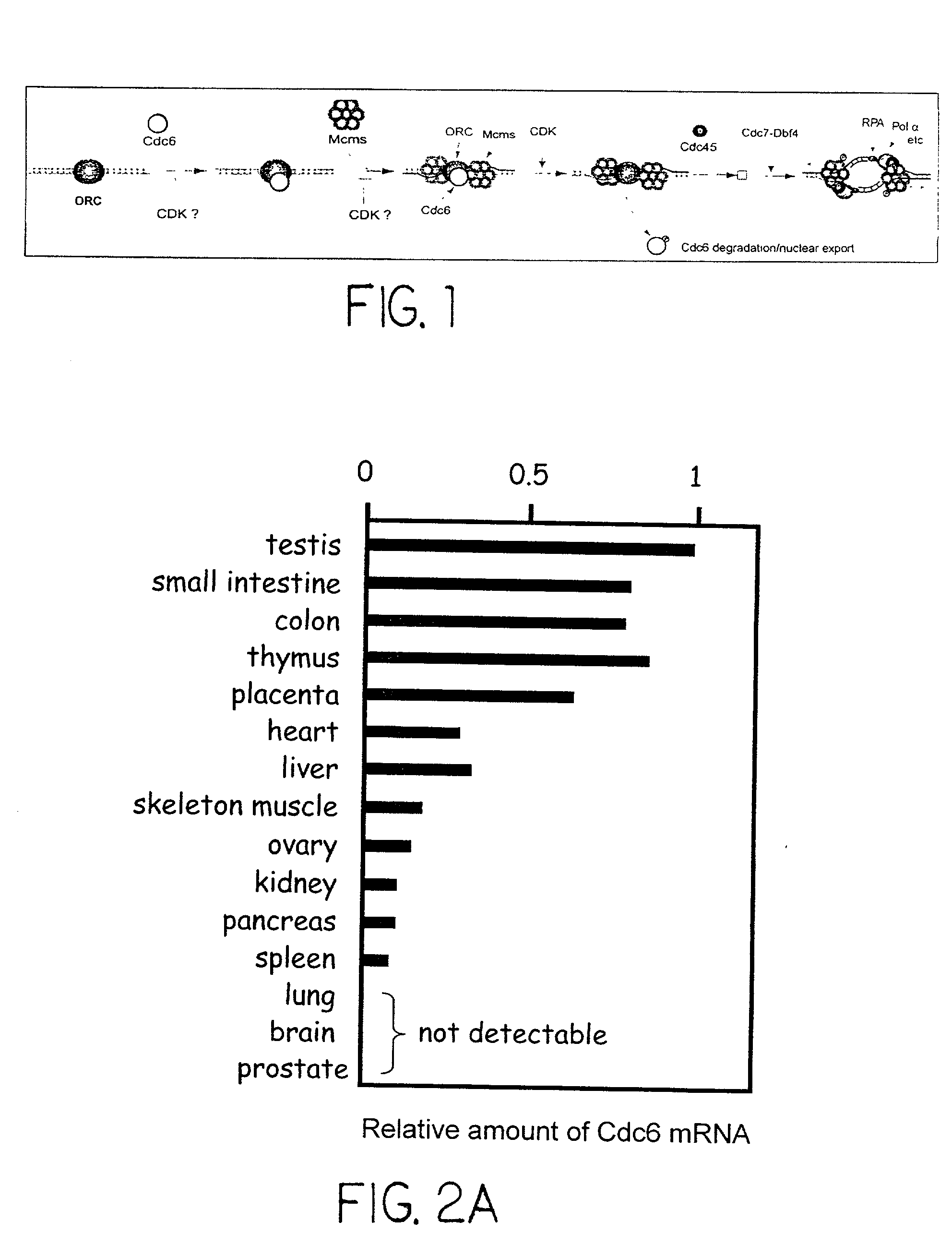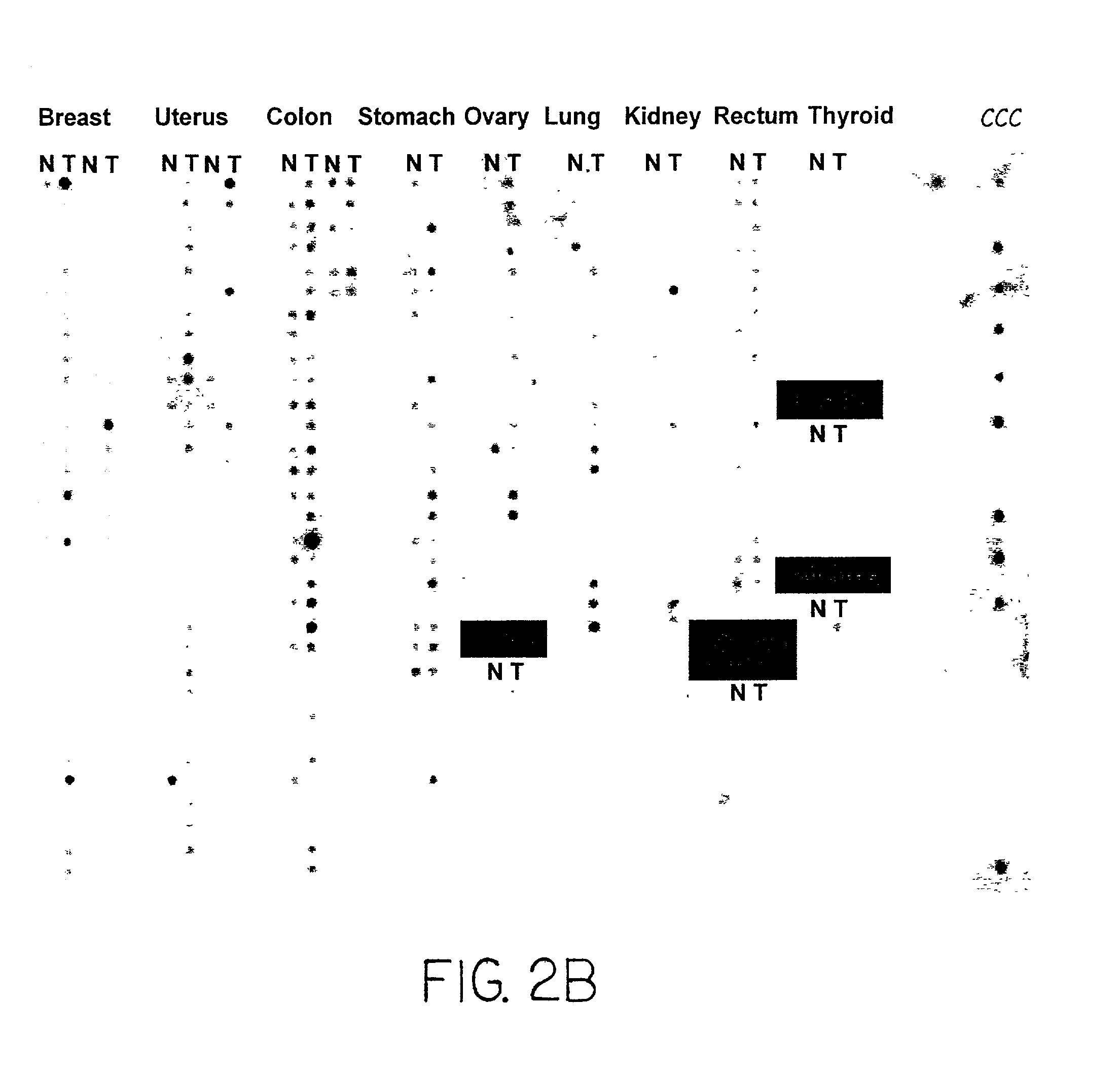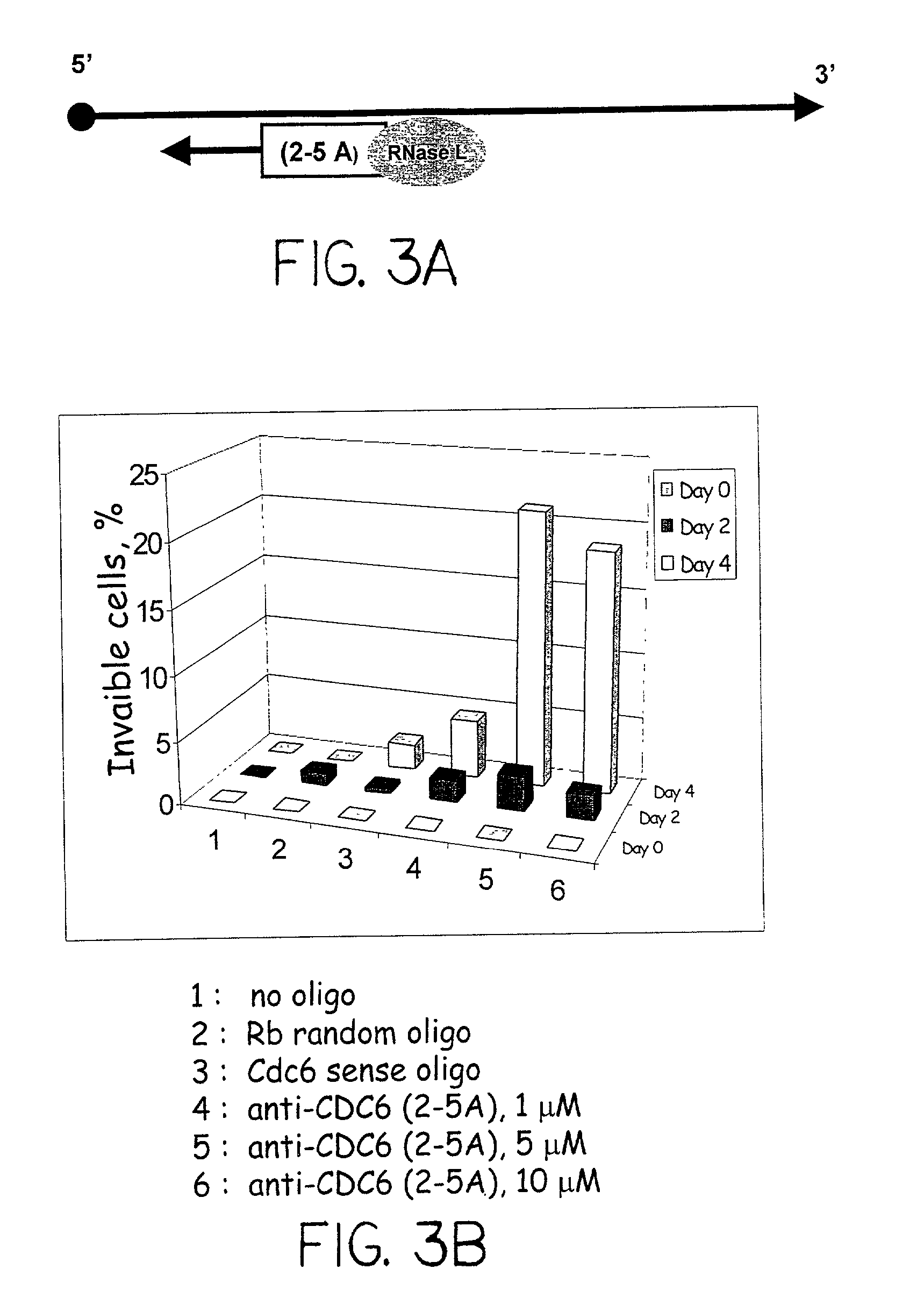Using Cdc6 as therapeutic, prognostic and diagnostic targets for cell growth/proliferation
a technology of cdc6 and cell growth, applied in the field of targeted gene therapy, can solve the problems of not being able to achieve the effect of most cancer treatments, many patients eventually succumb to the disease, and most of these genes may not be reliable markers or therapeutic targets for neoplastic cells
- Summary
- Abstract
- Description
- Claims
- Application Information
AI Technical Summary
Problems solved by technology
Method used
Image
Examples
Embodiment Construction
[0072] As shown in FIG. 1, the formation of pre-replicative complex at replication origins starts from the loading of Cdc6 at replication origins, leading into the competent state. The removal of Cdc6 from ORC-origin prevents DNA re-replication and leads to the activation of DNA synthesis. Thus, Cdc6 is the major trigger of the initiation of DNA synthesis.
[0073] As shown in FIG. 2A and 2B, the tissue blot and the cancer blot, purchased from Clontech, were probed with human Cdc6 riboprobe. The relative intensity of Cdc6 spots from different tissues was scanned by PhosphoImager.TM. (Bio-Rad), and normalized to testis reading as 1.0 in FIG. 2A. In 2B, cancer types are listed on the top of the matched normal (N) and tumor (T) pairs. CCC stands for "control cancer cells", the positive controls on the blot.
[0074] As shown in FIG. 3A, the anti-Cdc6 ASO that contains 18 nucleotides is complementary to the initiation codon of Cdc6 (marked as *) and links to modified oligo 2',5'-olgioadenylat...
PUM
| Property | Measurement | Unit |
|---|---|---|
| Northern blot | aaaaa | aaaaa |
| Northern blotting | aaaaa | aaaaa |
| imaging analysis | aaaaa | aaaaa |
Abstract
Description
Claims
Application Information
 Login to View More
Login to View More - R&D
- Intellectual Property
- Life Sciences
- Materials
- Tech Scout
- Unparalleled Data Quality
- Higher Quality Content
- 60% Fewer Hallucinations
Browse by: Latest US Patents, China's latest patents, Technical Efficacy Thesaurus, Application Domain, Technology Topic, Popular Technical Reports.
© 2025 PatSnap. All rights reserved.Legal|Privacy policy|Modern Slavery Act Transparency Statement|Sitemap|About US| Contact US: help@patsnap.com



